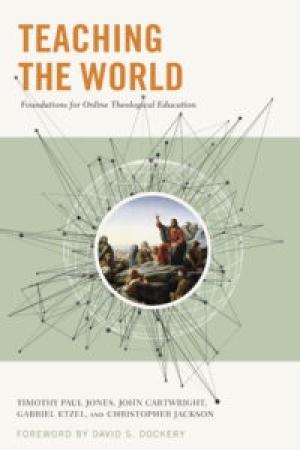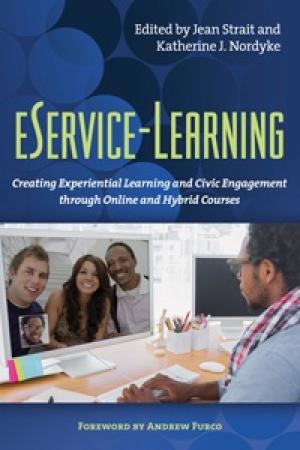Resources by Scott D. Edgar

Teaching the World is a welcome volume on online theological education that seeks to ground educational practice with a theological foundation. The work is a critically needed guide that directs leaders and administers in developing online education programs. Readers will find practical insight on program development on three levels: framework, faculty, and classroom. An introductory chapter entitled, “Past Patterns and Present Challenges in Online Theological Education,” describes the delivery of theological education from the early days of correspondence in the eighteenth century to the current practice of providing multimedia curricula fully online. After advocating the legitimacy of online theological education, the authors maintain that educational institutions have often not built their online programs on theological foundations. Instead, they have unwittingly overlooked this step in their rush to launch programs for primarily pragmatic reasons – increased enrollment and profitability. The balance of the book is divided into three sections. Section I, “Better Foundations for Online Learning,” examines the role of the Pauline Epistles in theological education, ministry preparation, and spiritual formation from a distance. The authors argue that Paul's Epistolary practice provides biblical support for theological education from a distance and an example of how to deliver it. Subsequent pages integrate “social presence theory” with Paul's epistolary practice, resulting in a conceptual framework for online program development. Section II, “Better Faculty for Online Learning,” provides theological guidance for faculty roles in online programs. Here the authors argue for faculty who: (1) emphasize the spiritual formation of students over the mere transfer of knowledge, (2) demonstrate the ability to leverage the medium of online education to accomplish the desired outcomes for students, and (3) model the theological and professional standards for ministry. In such an environment, online faculty members embody the values of the institution and effectively facilitate the desired outcomes of programs. Section III, “Better Practices in the Classroom,” maintains that the students’ ministry contexts make effective online learning possible. Students in online programs are typically older and engaged in some form of ministry. Consequently, online programs should incorporate adult learning theory and facilitate learning in the student’s ministry context – the local church serving as an active partner in ministry preparation. A concluding chapter, “To Teach, to Delight, and to Persuade,” argues that online programs are not a replacement for residential programs, but are a means for developing stronger partnerships for ministerial preparation. This book’s emphasis on using theology as a conceptual framework for online theological education is its conspicuous strength. Teaching the World: Foundations for Online Theological Education presents a grand vision for online theological education that is particularly valuable for leaders of theological schools who seek to develop online programs that are effective in fulfilling the educational outcomes of their institutions.

This bookadvocates civic engagement and service learning in higher education to provide students with transformative learning experiences. Linking service learning with online learning the authors present eService-Learning – a high-impact modality of learning for the twenty-first century. Contributors to the volume present research on teaching and learning as it relates to eService-Learning and provide best practices on how to incorporate eService-Learning experiences in courses and curricula. Divided into three parts, the first part of the book consists of four chapters setting forth “Essentials, Components, and Nuts and Bolts of eService-Learning.” Contributors present a rationale for civic engagement and service learning in higher education (7-19) and provide theoretical foundations for service and experiential learning, coupling both theory and practice to the emerging field of online learning (20-39). Authors guide readers in creating syllabi and learning experiences that facilitate the development of aptitudes and skills for service in online courses (40-57) and address the technology requirements for implementing eService-Learning (58-66). The second part, “Models for eService-Learning,” introduces readers to five different models for implementing eService-Learning as illustrated by universities that have implemented it at course or program levels. Models described leverage online and on-site learning in the following ways: (1) instruction online, service-learning on-site (69-88); (2) e-portfolio and reflection online, instruction and collaboration with service partners in class (89-104); (3) instruction and service partially on-site and online (105-118); (4) instruction and service conducted online (119-129); and (5) a mixed hybrid of models (130-143). Research in part two provides a critique and analysis of these five models of eService-Learning and step-by-step guidance for implementing each model. The third part, “Next Steps And Future Directions” provides advice to administrators and faculty interested in implementing eService-Learning at the course or program level. The first of two chapters describes the challenges that universities face if they question the relevance of higher education. The author skillfully argues that eService-Learning can reassert the relevance and worth of higher education in the twenty-first century (149-163). The final chapter expands the horizons of eService-Learning beyond the borders of higher education, suggesting possible applications for K-12 education, workplace training, learners with disabilities, and senior adults (164-166). This book is to be commended for articulating a rationale for including outcomes related to civic engagement and service-learning in higher education and best practices for using online technologies to implement eService-Learning in courses and curricula. A conspicuous strength is the description of various eService-Learning models. As such, the volume is particularly valuable for faculty and administrators in higher education.

Religion, Education and Society details research on the role of religious education (RE) in the secondary school system in the United Kingdom. The book is a selection of papers first presented at the conference “Religion in Education: Findings from the Religion and Society Programme” held at the University of Warwick (July 2011). The collection of contributions examines young people as they relate to religion in various settings. The study is diverse in terms of the religions included (Christianity, Islam, and Sikhism). Chapters reveal how young people reflect on religion in the classroom, with peers, in their families, in religious communities, and in wider society. Chapters report on findings related to three research areas. The first part consists of four chapters reporting on “Young People’s Attitudes to Religious Diversity.” Findings reveal that young people’s attitudes toward religion in general and to religious diversity are more strongly influenced by the practice and perceptions of religion in the broader community than by RE in the classroom (13-26). Research exposed a potentially negative result of school-based RE in contexts characterized by low levels of religious literacy; that information learned can be used to ridicule religious peers rather than to further mutual understanding (27-30). Contributors paint a picture of factors that influence religious faith among young people including religious affiliation, participation in public worship, personal faith practice and belief, and perceptions of God (31-60). The second part includes two chapters addressing the question, “Does Religious Education Work?” In the introduction to the volume, the editors identify two primary reasons for RE in public schools: (1) that religion is an integral part of human experience and worthy of examination, and (2) that the study of religion is instrumental in promoting social cohesion and enhancing the personal development of young people (5-11). Unfortunately, RE often suffers from a lack of clarity in purpose – thus hindering its intended outcomes. Findings provide insight on how postmodern thought, a constructivist philosophy of education, and contemporary societal realities have made it difficult to maintain a unified purpose for RE (61-80). The third part comprises seven chapters exploring the role and impact of RE in diverse contexts (81-169). Research presented describes the impact of various aspects of RE programs including curricula, teaching methodology, and the role of instructors in shaping the religious identities of young people. Emerging from these pages are practical guidelines for administrators, curriculum developers, and instructors. Chapters provide religious communities with workable models for partnering with RE programs in passing faith traditions on to future generations. A conspicuous strength of this book is critical analysis looking at factors influencing the effectiveness of RE in public schools. As such, the volume is particularly valuable for faculty teaching in RE programs. Consequently, the work is a significant contribution to both theory and practice of RE. Religion, Education and Society is to be commended for clarifying the purpose and presenting best practices in RE in public educational settings. Working through this volume will reward those engaged in teaching religious studies.